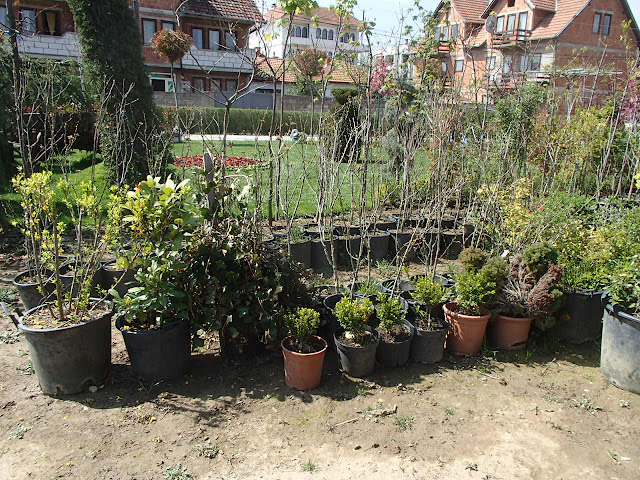Q. I live in the Anthem community in Henderson NV at 2900 feet and have a large variety of plants watered with drip emitters. I typically fertilize three time a year with a local nursery product. I also apply EDDHA iron chelate as needed if a shrub shows signs of yellowing. Comments?
 |
| One fertilizer application in the spring of each year is enough for most landscape plants. Some exceptions are lawns, vegetables, annual flowers and specialty shrubs like roses. |
A. Mineral fertilizers for home landscapes are
all the same, whether you get them from a local nursery or not. I select a
mineral fertilizer based upon price and the three numbers on the outside of the
bag.
The last of the three numbers, potassium,
should always be high. The first number, nitrogen, encourages growth and
greening of the plant and disappears with watering. The middle number,
phosphorus, encourages flowering, rooting and sticks around in the soil longer
after an application. If there is any fertilizer needed by plants later in the
year it’s the first number, nitrogen.
One application of fertilizer in the early
spring of each year is all that is required for most landscape plants.
Exceptions are lawns, vegetables, and “show plants”, like roses that produce a
show of flowers to enjoy. Even fruit trees grow well with one application of
fertilizer in the spring of each year. Winter tender plants, like most citrus and
bougainvillea, are fertilized only once in the early spring, avoiding
fertilizer applications after the middle of summer.
All that being said, it’s always best to
repeat applications of fertilizer in small amounts all through the growing
season. It’s not necessary, but according to research it’s best. this is the selling point made for fertilizer injectors like EZ Flo.
For plants that like continuous feeding
such as vegetables and “show plants”, I like to use rich compost as a
fertilizer in the beginning of the year and then follow up with very light
nitrogen applications the remainder of the year when needed.
















